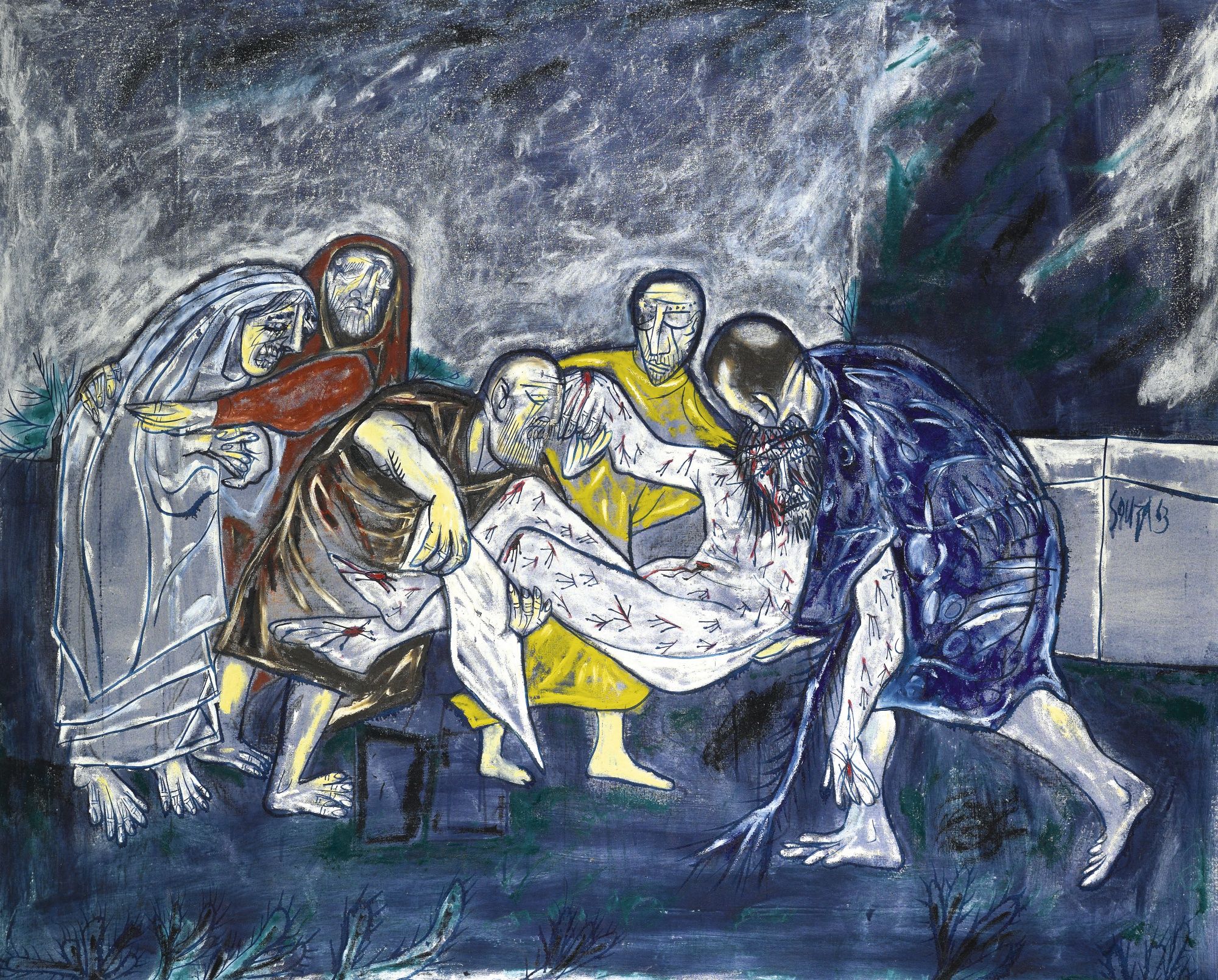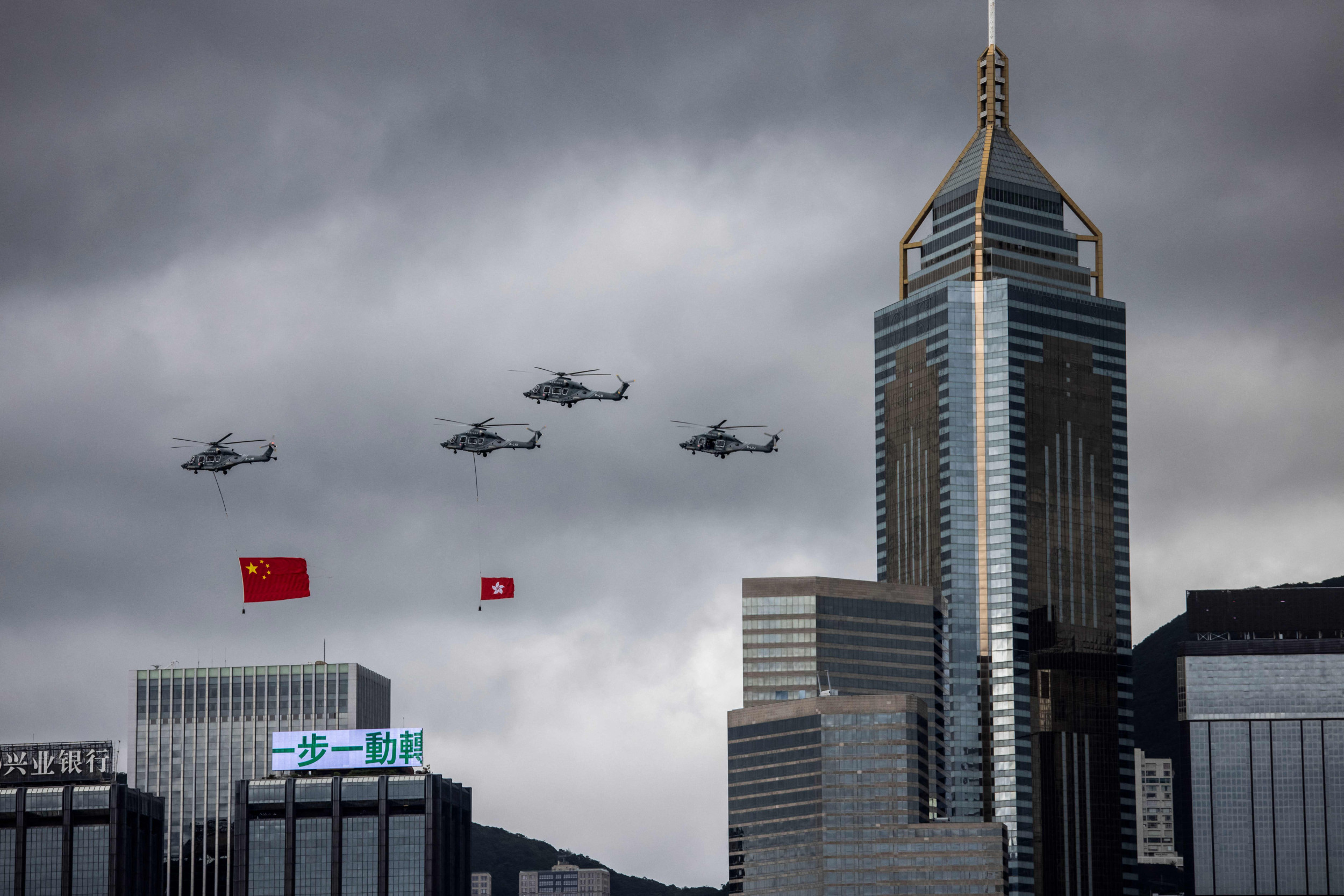
This article first appeared on the Riding the Elephant site.
On October 18, Sotheby's dispelled some of the gloom and uncertainty emanating from a poor Christie's $3.8 million auction of South Asian art in New York last month when its annual London auction yielded sales totaling $4.90 million at the depleted pound's current post-Brexit level.
The top lot was a memorable depiction of Christ's burial by Francis Newton Souza titled The Deposition, below, that sold for a hammer price of £1.30 million to £1.57 million ($1.92 million) including buyer's premium. The hammer price was just over two to three times a surprisingly low estimate of £400,000 to £600,000 for the 54-by-67-inch in oil on canvas
The colorful painting of Christ's body being moved by his followers was last sold in 1998 for £12,000 by London's Grosvenor Gallery. In a demonstration of the surge in top prices since then, its value has risen 80 times in the intervening 18 years (after adjusting for inflation).
Souza, one of India's leading 20th-century artists, died in 2002. Many of his works show the tortured legacy of a strict Roman Catholic upbringing under Portuguese colonial rule in the Indian state of Goa, before he left to live in London and New York.
The successful sale of this and other paintings in the Sotheby's and other recent auctions underlines one of the key points about the current uncertain state of the South Asian modern art market, which is being swamped by a surfeit of auctions: works generally do best if they have a strong provenance and are new to the market.
Even The Deposition might have stuck at around £700,000, when early bidders dropped out, if two potential buyers represented in the auction room by Yamini Mehta, Sotheby's department head, and Conor Macklin of the Grosvenor Gallery, had not fought it out. They raised the price by some £600,000 and Mehta won—for what Sotheby's describe as a "European Trade buyer" and not for Kiran Nadar, India's most prolific collector, who had seemed a likely candidate.
The next highest sale was achieved for a brightly colored untitled 60-by-39-inch oil on canvas by Vasudeo S. Gaitonde that went to a private Indian buyer.
Estimated at more than twice the Souza price, it sold for far less—an £800,000 hammer price, which was under the £900,000 low estimate. The total figure of £965,000 ($1.18 million), including buyer's premium, was more than twice the $507,000 it sold for in September 2013 at Christie's in New York, so it bucked the trend.
By contrast, the most prominent failure at the Christie's New York sale last month was a rather dark and gloomy similar-sized Gaitonde that was estimated at what proved to be an unrealistically high $1.8 million to $2.2 million.
Gaitonde has been doing well in recent years and he currently holds the record for the highest auction price achieved by an Indian modern artist.
It could be that the number of potential Gaitonde buyers with over a million dollars to spend is fading out, though another of his works sold successfully, albeit only just above its low estimate, for $1.53 million at a live auction staged in New Delhi on September 8 by Mumbai-based Saffronart.
With sales at that auction totaling $10.39 million including buyer's premium, Saffronart, whose main business is online auctions, did amazing well overall in striking contrast to Christie's $3.8 million—but none of my art market sources have been able to explain why that was.
It was the top end of the Christie's sale that was worst hit. Below that, many works sold well including an acrylic on canvas by Syed Haider Raza, who died a few months ago, going for a hammer price of $245,000. That was well above the $100,000 to $150,000 estimate, while one of his early works failed to reach the low estimate of $1 million and did not sell.
Saffronart's top work was a remarkable large 52-by-144-inch plastic emulsion on canvas, Greek Landscape, by Akbar Padamsee that had not been in the market since 1960. It sold for $2.91 million, more than double the high estimate. Reproductions of this work do not do it justice, say people who saw it hanging in the New Delhi home of the veteran artist Krishen Khanna. He bought it in 1960, the year it was painted. Khanna was originally a banker, and the reverse side of the work is inscribed "owned by K Khanna/National & Grindlays Bank Ltd./Kanpur UP".
Commenting on yesterday's Sotheby's auction, Yamini Mehta underlined the point that it included a large number of works that were "new to market," and said that she had intentionally aimed at works in lower prices ranges that would attract new and younger buyers.
The auction started with 21 works from the estate of Dolf Amacker, a Swiss air-conditioning engineer who amassed a collection when he was working in India between 1947 and 1961.
These were the years when now-famous Indian moderns were beginning to attract attention and the works have not been seen on the market for 60 or more years.
Yesterday, Amacker's collection fetched prices mostly between £5,000 and just over £40,000 (including buyer's premium). They included colorful early M.F. Husains, originally bought direct from the artist, that fetched up to £42,500. A Ganesh Pyne went for £77,500.
There are four or five South Asian art auctions in the next few months, but the main test of the market will come on December 18 when Christie's holds its annual India Sale in Mumbai. This is its prestige event for this market, so it is determined not to repeat the New York experience.
John Elliott writes from New Delhi. His latest book is IMPLOSION: India's Tryst With Reality (HarperCollins, India).
Uncommon Knowledge
Newsweek is committed to challenging conventional wisdom and finding connections in the search for common ground.
Newsweek is committed to challenging conventional wisdom and finding connections in the search for common ground.
About the writer
To read how Newsweek uses AI as a newsroom tool, Click here.






